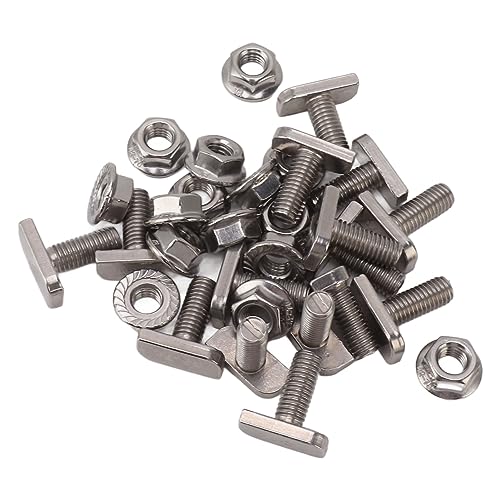You are using an out of date browser. It may not display this or other websites correctly.
You should upgrade or use an alternative browser.
You should upgrade or use an alternative browser.
Zs revision
- Thread starter searley
- Start date

Help Support Talk Electrician Forum:
This site may earn a commission from merchant affiliate
links, including eBay, Amazon, and others.
Robin Spark
Well-known member
- Joined
- Aug 30, 2009
- Messages
- 1,425
- Reaction score
- 0
Hi Searley,
think I am having a Leffe Blond moment cos not sure what exactly you are asking for?
think I am having a Leffe Blond moment cos not sure what exactly you are asking for?
- Joined
- Mar 28, 2008
- Messages
- 14,521
- Reaction score
- 1,199
Ahhh Another Classic Searley question?has anybody out there got anygood revision for zs calcs IE using the rule of thumb 0.8 method need to do calcs and no if they pass or fail the values. headbang thanks for looking.
Is this any help m8? ?:| :|
The maximum permissible earth fault loop impedance values are those given in the tables 41.2 / 41.3 /41.4 on pages 48 & 49 of Big Red.
IF the values are exceeded whilst the cable is at NORMAL OPERATING TEMPERATURE it is a FAIL.
Either need lower rated protective device OR larger CSA cable.
IF you are doing your tests with cables that are cooler than normal operating temperature (which is ALL of the time cuz you test while the circuit is not under full load, or dead if doing R1+R2+Ze!) THEN you need to take pay attention to the note below each table... that references to the guidance in Appendix 14 Page 361 of Big red.
Appendix 14 suggest the '0.8 x Max tabulated value' as being a good "rule of thumb" to a safe "Cold" reading that will still meet 411.4.5 or 411.5.4 when the cables are warmer under "normal operating conditions".
So any recored value lower than the "0.8 Thumb value" will be a good 'PASS'
HOWEVER a reading higher than the 0.8 Rule-of-thumb and Lower than the tabulated max values can still be a Pass, but you would just need to do a more precise assesment...
see bottom few paragraphs of Page 361...
AND take a point of the final NOTE
"other methods are not precluded"
Bottom line
Below 0.8 x Max permissible = Pass
Above 0.8 And below max permissible may be Pass or Fail depending upon other calcs!
Above max permissible = Fail
SL
GuinnessGuinnessGuinness
Last edited by a moderator:
- Joined
- Mar 28, 2008
- Messages
- 14,521
- Reaction score
- 1,199
a Leffe Blond moment ...... :|Hi Searley,think I am having a Leffe Blond moment cos not sure what exactly you are asking for?
a Leffe Blond moment ....... ?:|
a Leffe Blond moment ........
I am sure thats what Apache & Badger used to call....
A Deke's Red Dress Moment!
or am i getting confused again???Blushing
:coat :coat
Risteard
Senior Member
Without any load connected to the circuit, but not dead. It is, after all, a live test.IF you are doing your tests with cables that are cooler than normal operating temperature (which is ALL of the time cuz you test while the circuit is dead!)
The 1.2 factor could also be applied to the (R1+R2) value for the circuit (subtract Ze), assuming that the temperature is 20 degrees or corrected to 20 degrees first. Add Ze to the corrected (R1+R2) and then this can be compared with the tabulated value in BS7671:2008.
Obviously the 0.8 "Rule of Thumb" is the simpler of the two methods.

£519.99
Stalwart DA-YSD1AE Commercial Electric Convection Oven 4 Trays 325x450mm
Nextday Catering Equipment Supplies
- Joined
- Mar 28, 2008
- Messages
- 14,521
- Reaction score
- 1,199
Quite correct Ristard....Without any load connected to the circuit, but not dead. It is, after all, a live test.The 1.2 factor could also be applied to the (R1+R2) value for the circuit (subtract Ze), assuming that the temperature is 20 degrees or corrected to 20 degrees first. Add Ze to the corrected (R1+R2) and then this can be compared with the tabulated value in BS7671:2008.
Obviously the 0.8 "Rule of Thumb" is the simpler of the two methods.
too many GuinnessGuinnessGuinness
& past midnight...
me brain knew what i meant...
just me fingers didn't keep up! :_| :x
I shall go and correct now...
DOH!!!Blushing
Risteard
Senior Member
Good man! It happens to the best of us at times! ROTFWL Guinness :Ytoo many GuinnessGuinnessGuinness
- Joined
- Feb 27, 2008
- Messages
- 11,018
- Reaction score
- 0
Is Peter back as well.Will check them for you when next online. Off to watch Jordan in the Jungle Now:^OGuinness
Bez
Senior Member
- Joined
- Nov 1, 2009
- Messages
- 525
- Reaction score
- 0
Example reads wrong to me, unless i'm missing something it should read:where they all right as i have nothing to check them off ?
10.2 ohm(measured value) < 14.16 ohm (corrected vaue) PASS
Bez
Senior Member
- Joined
- Nov 1, 2009
- Messages
- 525
- Reaction score
- 0
Multiplication error on No. 2 1.44 x 0.8 = 1.15are my calcs right for these on question 26 ?1, 2.3 X 0.8 = 1.84 fail
2, 1.44 x 0.8 = 0.72 pass
3, 0.57 x 0.8 = 0.456 fail
4, 0.36 x 0.8 = 0.288 pass
thanks for looking.
Other than that your calcs are fine but your passes and fails are back to front.
Don't forget as long as your measured value is below the corrected value, it's a pass.
Hope this helps
Similar threads
- Replies
- 1
- Views
- 1K
- Replies
- 35
- Views
- 1K
- Replies
- 4
- Views
- 468































































